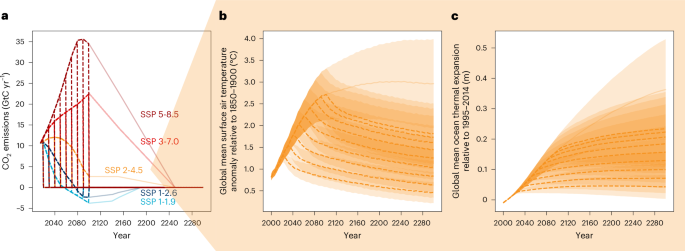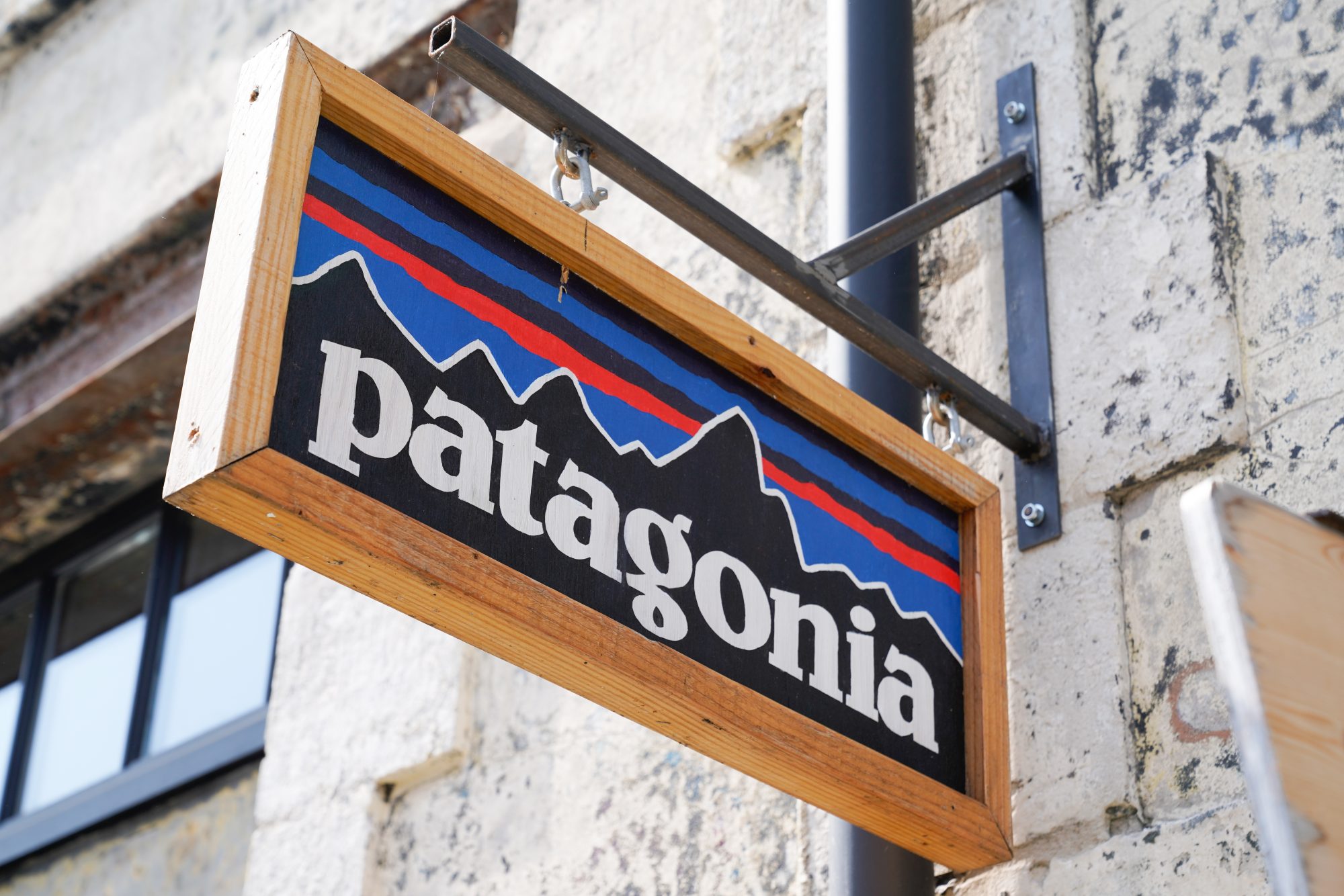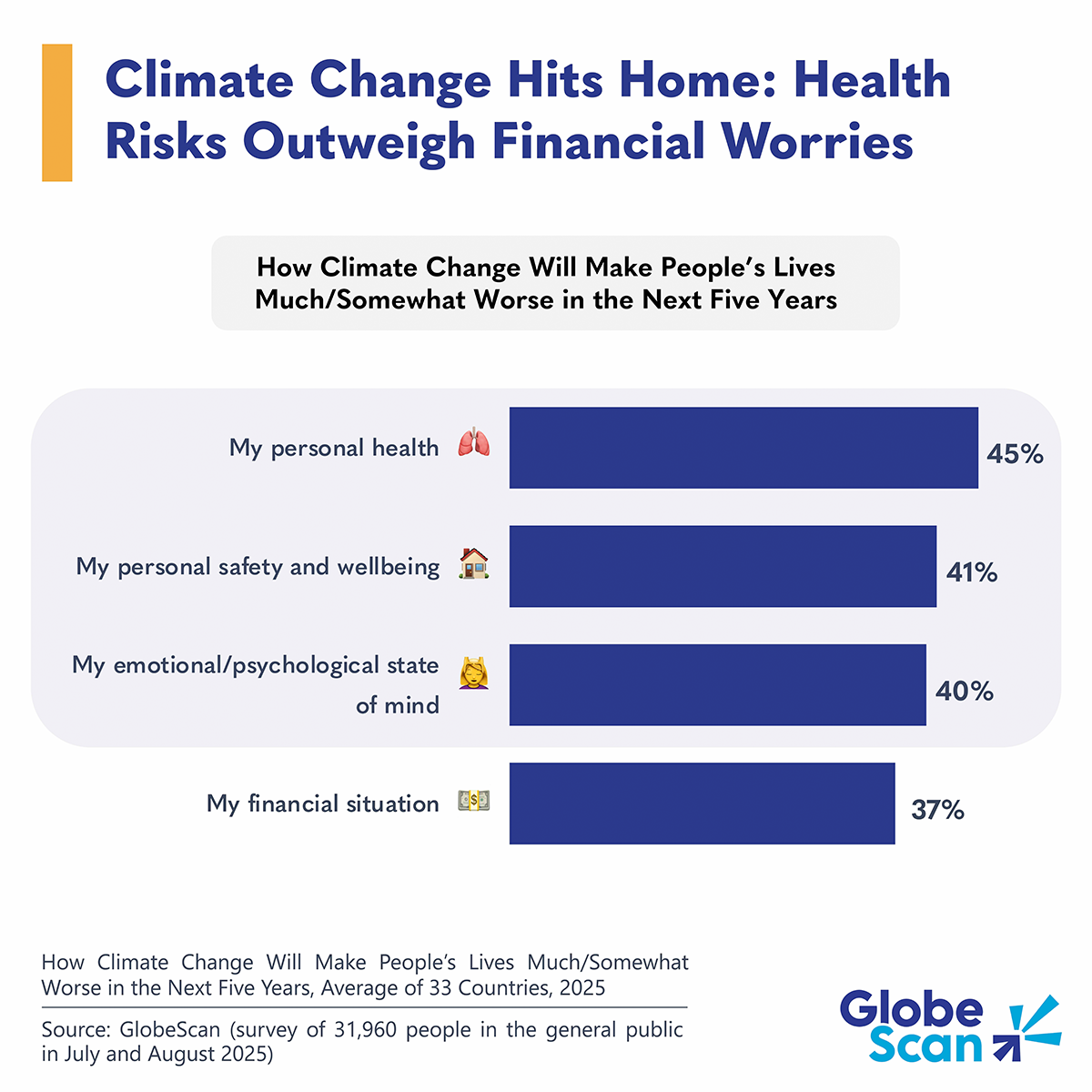Report on Multi-Century Sea-Level Rise Commitments and Implications for Sustainable Development Goals
1.0 Introduction: Sea-Level Rise and the Imperative for Sustainable Development
This report analyzes the long-term global and regional sea-level rise (SLR) locked in by historical and near-term greenhouse gas (GHG) emissions. The findings underscore the profound and irreversible consequences of current climate policies on future generations, directly impacting the achievement of the United Nations Sustainable Development Goals (SDGs). The slow response of oceans and ice sheets to warming means that emissions released today commit the planet to centuries of rising seas, posing a significant threat to coastal communities, ecosystems, and global equity. This analysis directly informs key SDGs, including:
- SDG 13 (Climate Action): By quantifying the long-term impact of near-term emissions, the report highlights the urgency of ambitious mitigation efforts.
- SDG 11 (Sustainable Cities and Communities): The findings reveal the escalating risks to coastal infrastructure and populations, challenging the resilience and sustainability of coastal settlements.
- SDG 14 (Life Below Water): Rising seas threaten coastal and marine ecosystems, which are vital for biodiversity and human livelihoods.
- SDG 10 (Reduced Inequalities): The report shows that vulnerable regions, particularly Small Island Developing States (SIDS), face disproportionately severe impacts, exacerbating global inequalities.
2.0 Global Sea-Level Rise Commitments and SDG 13 (Climate Action)
The study reveals a direct and quantifiable link between cumulative GHG emissions and multi-century SLR. This connection establishes a clear basis for action under SDG 13, demonstrating that delayed mitigation locks in irreversible environmental change. The long-term consequences of failing to meet ambitious climate targets are stark and measurable.
2.1 Impact of Historical and Near-Term Emissions
Analysis of emission scenarios reveals critical insights into locked-in SLR by the year 2300.
- Historical Emissions Commitment: GHG emissions until 2020 have already committed the planet to a median global mean sea-level rise (GMSLR) of 0.29 meters (likely range 0.2–0.41 m) by 2300, relative to the 1995–2014 baseline. This establishes a baseline of unavoidable change that necessitates adaptation.
- Current Policy Projections: Following current climate policies (approximated by the SSP2-4.5 scenario), emissions until 2050 will lock in an additional 0.3 meters of GMSLR by 2300. This brings the total committed rise to 0.58 meters.
- The Cost of Delay: If emissions continue along the current policy trajectory until 2090, the committed GMSLR increases to 1.1 meters (median estimate), with a likely range of 0.8–1.9 meters.
- The Benefit of Mitigation: Adhering to a very stringent mitigation pathway consistent with the Paris Agreement (SSP1-1.9) could avoid 0.6 meters of this rise, limiting the total commitment from 2090 emissions to 0.44 meters. This highlights the critical window of opportunity for meaningful climate action as called for by SDG 13.
2.2 Carbon Budgets and Peak Warming Implications
The relationship between cumulative CO2 emissions, peak warming, and SLR further reinforces the need for immediate action to achieve SDG 13.
- Carbon Budget Sensitivity: The difference in cumulative CO2 emissions between pathways that limit warming to 1.5°C versus 2°C translates into a substantial difference in long-term SLR commitment, potentially exceeding 0.5 meters.
- Non-Linear Response: The study identifies a non-linear relationship between peak warming and GMSLR commitment. As temperatures rise, the sensitivity of sea levels increases, primarily due to the accelerated melting of ice sheets. This means that each increment of warming beyond the Paris Agreement targets results in a disproportionately larger sea-level response, escalating long-term risks.
3.0 Regional Impacts: A Challenge to Equity and Sustainability (SDGs 10, 11, 14)
SLR does not occur uniformly across the globe. Regional variations, driven by factors such as ocean dynamics and gravitational effects from melting ice sheets, create hotspots of vulnerability. These regional disparities directly challenge the principles of equity and sustainability central to the SDGs.
3.1 Vulnerability of Coastal Communities and Small Island Developing States
The regional projections highlight severe threats to coastal populations, undermining SDG 11 (Sustainable Cities and Communities) and exacerbating global disparities, which is counter to SDG 10 (Reduced Inequalities).
- Small Island Developing States (SIDS): Regions such as the Pacific islands (e.g., Pago Pago, American Samoa) are projected to experience SLR approximately 10% higher than the global average. This is primarily due to the gravitational effects of Antarctic ice melt, posing an existential threat to these nations.
- Major Coastal Cities: Locations like New York City are projected to experience substantially higher-than-average SLR, amplifying risks to critical infrastructure, economies, and populations.
- Disproportionate Impacts: The fact that the most vulnerable regions, which have contributed least to historical emissions, face the most severe consequences is a critical issue of climate justice and a direct challenge to SDG 10.
3.2 Threats to Marine and Coastal Ecosystems
The projected SLR poses a direct threat to the health of oceans and coastal ecosystems, which is the focus of SDG 14 (Life Below Water).
- Coastal habitats such as mangroves, salt marshes, and coral reefs are highly sensitive to sea level.
- Accelerated SLR can lead to coastal erosion, saltwater intrusion into freshwater sources, and the permanent inundation of vital ecosystems.
- The loss of these habitats reduces biodiversity, diminishes natural coastal protection, and impacts livelihoods dependent on marine resources.
4.0 Methodological Framework and Future Directions
The report’s findings are based on a dedicated modeling framework designed to isolate the long-term SLR commitments from specific periods of GHG emissions.
4.1 Modeling Approach
- Scenario Design: The study utilized modified Shared Socioeconomic Pathway (SSP) scenarios where GHG emissions are set to zero at different decades (2020, 2030, etc.) to quantify the “locked-in” SLR from cumulative emissions up to that point.
- Climate Emulators: The MAGICC sea-level model was used to project GMSLR out to the year 2300, translating emissions into temperature changes and subsequent responses from thermal expansion, glaciers, and ice sheets.
- Regionalization: Global projections were downscaled to provide regional estimates, accounting for ocean dynamics, gravitational, rotational, and deformational (GRD) responses to ice melt.
4.2 Limitations and Recommendations
While the modeling provides critical insights, it is subject to uncertainties, particularly concerning the long-term stability of ice sheets and the precise mechanisms of regional sea-level change. Future research should focus on refining these models to provide more robust local projections, which are essential for effective adaptation planning and achieving the SDGs. A more systematic comparison of sea-level emulators is needed to better understand and constrain projection uncertainties.
5.0 Conclusion: Urgent Mitigation for a Sustainable Future
The evidence presented in this report is unequivocal: mitigation decisions made in the coming decades will dictate the trajectory of sea-level rise for centuries to come. Every ton of GHG emitted adds to a legacy of irreversible environmental change that will disproportionately harm the most vulnerable. Aligning global emissions with a pathway consistent with the Paris Agreement is not merely an environmental goal but a fundamental prerequisite for achieving the Sustainable Development Goals. Failure to take decisive climate action under SDG 13 will irrevocably undermine progress on creating sustainable communities (SDG 11), protecting marine life (SDG 14), and reducing global inequalities (SDG 10).
Analysis of Sustainable Development Goals in the Article
1. Which SDGs are addressed or connected to the issues highlighted in the article?
The article on sea-level rise (SLR) commitments from greenhouse gas (GHG) emissions directly addresses and connects to several Sustainable Development Goals (SDGs). The primary focus on climate change impacts, ocean health, and the vulnerability of coastal communities establishes these links.
-
SDG 13: Climate Action
- This is the most central SDG to the article. The entire study is about quantifying the long-term consequences (sea-level rise) of GHG emissions, which is the core of climate change. It explicitly discusses mitigation decisions, climate policies, and the Paris Agreement, all of which are fundamental components of SDG 13.
-
SDG 14: Life Below Water
- The article’s focus on sea-level rise, a direct physical change to the world’s oceans, connects it to SDG 14. It discusses ocean thermal expansion as a key driver of SLR and the impact on coastal ecosystems, which are part of the marine environment that SDG 14 aims to protect.
-
SDG 11: Sustainable Cities and Communities
- The article highlights the regional impacts of SLR, which directly threaten coastal cities and human settlements. It mentions the need for “coastal risk management,” “adaptation planning,” and “planned relocation,” which are critical for making communities resilient and sustainable in the face of climate-related disasters like permanent inundation from SLR. The specific mention of New York City as a case study reinforces this connection.
-
SDG 10: Reduced Inequalities
- The analysis points out the disproportionate impacts on vulnerable regions. It states that “Pacific small island nations will experience SLR that is around 10% higher than the global mean” and discusses the “severe SLR threat for small islands and vulnerable coastal areas.” This highlights the inequitable burden of climate change impacts, a key concern of SDG 10.
2. What specific targets under those SDGs can be identified based on the article’s content?
Based on the article’s detailed discussion, several specific SDG targets can be identified:
-
Under SDG 13 (Climate Action):
- Target 13.1: Strengthen resilience and adaptive capacity to climate-related hazards and natural disasters in all countries. The article directly supports this by providing data to “better inform adaptation planning” and discussing adaptation measures like “ecosystem-based adaptation” and “planned relocation” in response to the hazard of SLR.
- Target 13.2: Integrate climate change measures into national policies, strategies and planning. The article emphasizes that “multi-century sea-level rise commitments are strongly controlled by mitigation decisions in coming decades” and references “Nationally Determined Contributions under the UNFCCC” and the “Paris Agreement,” linking its scientific findings directly to policy-making frameworks.
-
Under SDG 14 (Life Below Water):
- Target 14.2: By 2020, sustainably manage and protect marine and coastal ecosystems to avoid significant adverse impacts. The threat of SLR detailed in the article represents a significant adverse impact on coastal ecosystems. The mention of “ecosystem-based adaptation” implies the need to manage these systems to bolster resilience.
- Target 14.a: Increase scientific knowledge, develop research capacity and transfer marine technology… The article itself is a contribution to this target by using and refining complex models (MAGICC, P20) to “more comprehensively explore” the SLR response and improve scientific understanding of long-term ocean changes.
-
Under SDG 11 (Sustainable Cities and Communities):
- Target 11.5: By 2030, significantly reduce the number of deaths and the number of people affected… by disasters, including water-related disasters, with a focus on protecting the poor and people in vulnerable situations. The article’s quantification of SLR threats to “vulnerable regions such as Small Island Developing States” and its call to support “assessments of adaptation requirements and loss and damage” directly relate to understanding and mitigating the impacts of this slow-onset, water-related disaster.
- Target 11.b: By 2020, substantially increase the number of cities and human settlements adopting and implementing integrated policies and plans towards… mitigation and adaptation to climate change, resilience to disasters… The study’s stated goal is to “better inform mitigation and adaptation planning,” providing the scientific basis for the integrated policies and plans mentioned in this target.
3. Are there any indicators mentioned or implied in the article that can be used to measure progress towards the identified targets?
The article, being a scientific study, provides several quantitative metrics that can serve as or inform official indicators for measuring progress.
-
Indicators for Climate Impact and Mitigation (related to SDG 13):
- Global Mean Sea-Level Rise (GMSLR) Commitment (in meters): The article provides specific projections, such as emissions until 2050 under current policies locking in “0.3 m (likely range 0.2–0.5 m) more global mean sea-level rise by 2300.” This metric can be used to track the long-term consequences of current emission pathways.
- Cumulative GHG/CO2 Emissions: The study relates SLR commitments directly to “cumulative net-positive CO2 emissions” and carbon budgets for 1.5°C and 2°C, making this a clear indicator for tracking the drivers of SLR.
- Peak Global Warming (°C): The article establishes a “nonlinear relationship between GMSLR and temperature change,” using peak warming as a key variable to project future SLR. This can be used as an indicator of committed SLR.
-
Indicators for Regional Vulnerability (related to SDG 11 and SDG 10):
- Regional Sea-Level Rise Projections (in meters): The article provides regional SLR data for specific locations (e.g., New York, Pago Pago) and regions (e.g., Pacific, South Atlantic), showing deviations from the global average. For instance, it notes that for the “vulnerable Pacific region,” commitments would be “around 10% higher than the global signal.” These regional projections are crucial for assessing local risk and adaptation needs.
-
Indicators for Scientific Capacity (related to SDG 14):
- Use and Development of Climate/Sea-Level Emulators: The article’s reliance on and comparison of models like the “MAGICC sea-level model” and the “P20 sea-level emulator” implies that the sophistication and application of such scientific tools can be an indicator of progress in understanding and projecting climate impacts.
4. Table of SDGs, Targets, and Indicators
| SDGs | Targets | Indicators Identified in the Article |
|---|---|---|
| SDG 13: Climate Action |
|
|
| SDG 14: Life Below Water |
|
|
| SDG 11: Sustainable Cities and Communities |
|
|
| SDG 10: Reduced Inequalities |
|
|
Source: nature.com







